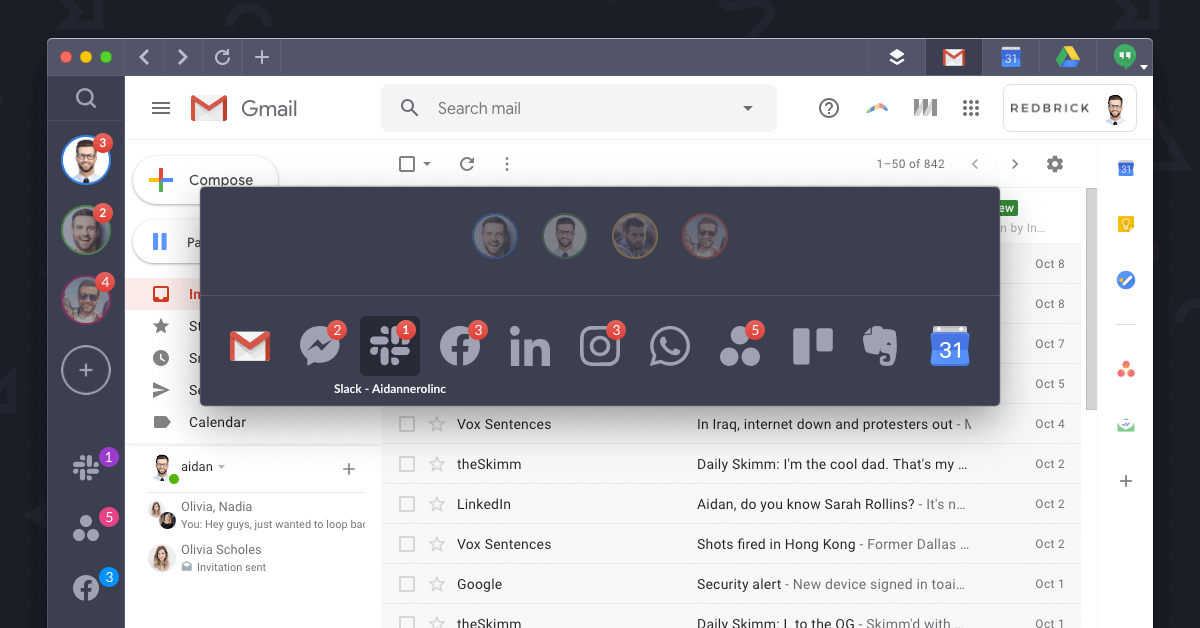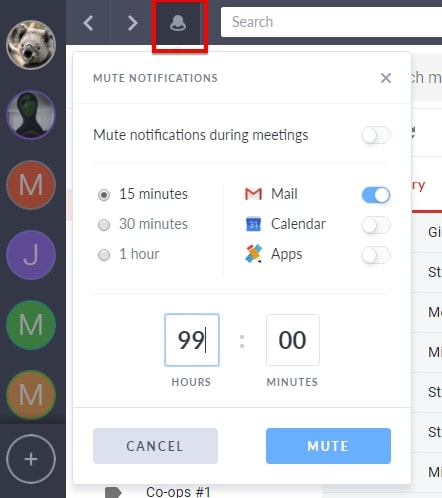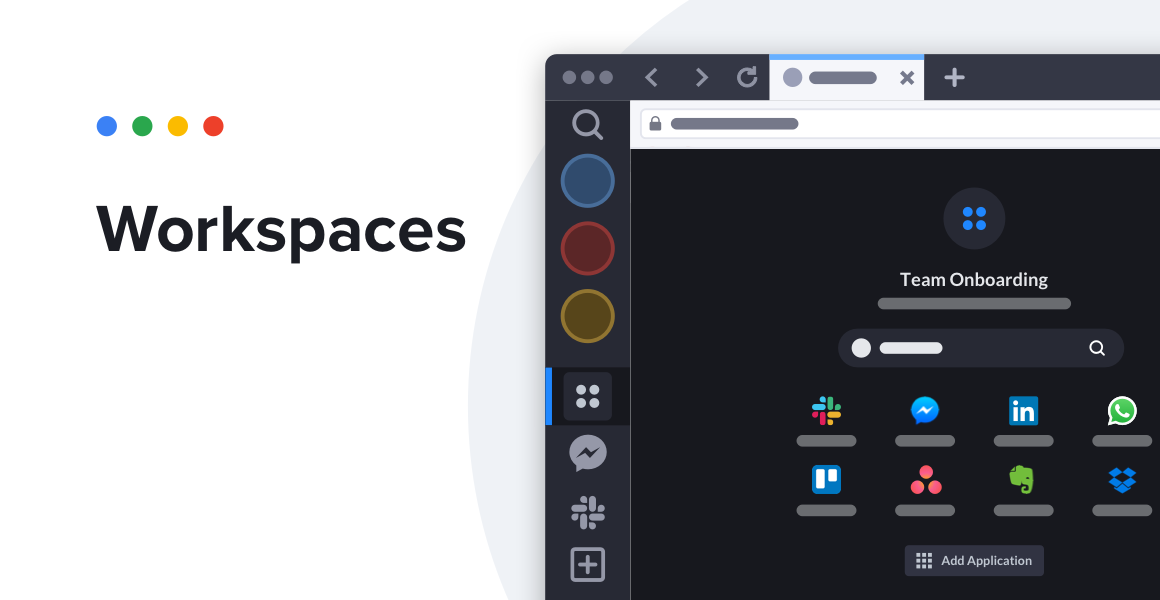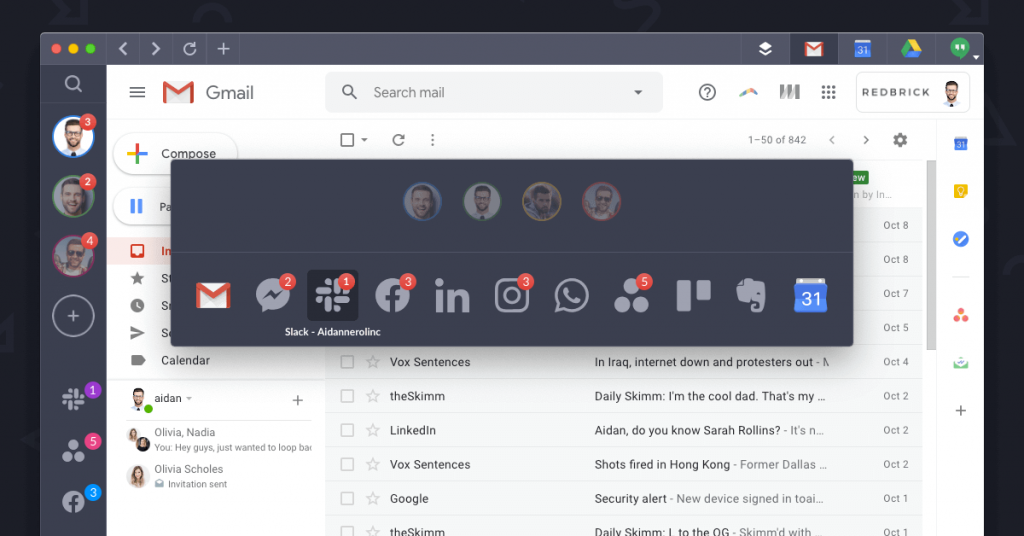All of the apps available today were supposed to make us more productive. There are apps to help with everything from project management to to-do lists, from organizing our notes, to keeping track of time. But, instead of being our most productive selves, we’re drowning in a sea of emails, messages, and notifications, and to get a breath of air we might… download another app to hopefully solve our problems and finally organize our lives? The cycle stops here—keep reading to learn how to avoid burning out from an overload of notification sounds and push notifications, and finally maximize your productivity.
The Problem With Notification Overload
All of the apps we use are optimized to hold onto our attention for as long as possible. Notifications keep us coming back again and again since seeing a notification actually makes our brains feel rewarded and happy. But, when overused, that happiness can turn addictive and result in way too much (wasted) time being spent looking at phone and computer screens. Notifications also sap our productivity as we spend too much time moving between apps to keep up with all of those alerts. Unfortunately, we can’t avoid notifications completely, after all, you won’t ever get rid of work emails and you wouldn’t want to stop receiving messages from loved ones. Thankfully, there are solutions to the problem of notification overload. With just a few simple strategies, you can go from completely overwhelmed to totally in control of all of your notifications by creating the ultimate notification-free work zone.
Consolidate Your Notifications
Shift consolidates all of the notifications from all of your apps and email accounts and brings them together into one place. You won’t have to check in multiple places anymore just to see if you have any new alerts. Instead, you just have to check the number in the red bubble on the Shift icon in your Taskbar or Dock, and there you go—no more overload from chrome notifications or push notifications. This will save a ton of time that’s usually wanted switching between apps and bouncing around from notification to notification.
Tip: You can also turn off notifications or remove the notification badge for individual apps within Shift if you don’t want to be alerted by that particular app at all.

Streamline Your Apps
Using too many different apps contributes to the problem of receiving too many notifications every single day. So, start by getting rid of the app overload in order to get rid of the notification overload. It’s much more efficient to choose only the apps you really need to get work done each day. Also, delete any apps that are redundant to reduce the overall number of notifications that you receive every day. You don’t need more than one project management, note-taking or to-do list app in order to get your work done effectively. This will also reduce the number of apps you have to switch back-and-forth between every day, which is always a time-saver.
Social media apps, especially, are the cause of so many of the push notifications that we receive every day. And besides, checking social media doesn’t really have a place within a productive work day. Either delete social media apps completely so that you don’t receive notifications, or, turn off notifications for social media apps within Shift so that you can still check those apps, but won’t be bothered by alerts.
Tip: Try to pick apps that have multiple uses, instead of choosing one app for each hyper specific use case which only leads to more notifications. For example, try using Notion as a project management, to-do list, and note taking app, all in one.
Turn Off Notifications
Sometimes getting all your notifications in one place and reducing the number of apps you use just isn’t enough. That’s when it’s time to use do not disturb mode or snooze notifications. When you really need to focus on work, the best thing you can do is guarantee that you won’t be disturbed by any notifications. Start by setting aside defined periods of time during the day which are dedicated to deep, focused work. Be sure to mark those blocks of time in your calendar so people know that you won’t be available and shouldn’t expect a response during that time. Then, turn off those notifications, or go into do not disturb mode, and get to work—distraction free.
Tip: Set up an “emergency line” so that people can reach you if they really need to. Choose a messaging app you don’t otherwise use and reserve that for you and your team to contact each other during those periods of time when you have notifications turned off—but use it very sparingly.

Put Away Your Phone
All of the notifications constantly appearing on your phone’s screen are the true enemy of productivity. Push notifications especially cause your brain to be overloaded by notifications. You could put your phone in do not disturb more but why not go one step further and leave it off of your desk altogether. If you do need to check in occasionally with communication apps, those can go in Shift, with notifications off, and you can then check those apps only at set times during the day. This will eliminate the need to use a separate device and eliminate the demands on your attention that your smartphone causes, especially the disruptions resulting from notification sounds breaking your concentration every few minutes.
Tip: This is one for those times when you are getting really distracted by your phone, but really can’t afford to be, so you need to take some drastic action. Turn off your phone and swap it with someone else that you work with so that neither of you will be tempted to check your phone during time that is set aside for notification-free, focused work.
Choose Tools That Will Help
It seems really counterintuitive to suggest using more apps to help deal with all of the notifications that are coming from all of the apps you already use. But, these are worth it.
- RescueTime ‒ You can track which apps you use through RescueTime. Once you’ve figured out which apps you actually need and use, delete the apps you don’t spend a lot of time in (but that may be sending you unwanted notifications).
- SaneBox ‒ This email productivity tool will help reduce the number of email notifications you receive by automatically sorting your email for you and only letting the important emails actually end up in your inbox for you to read. There’s even a “BlackHole” feature which means you won’t ever see an email from that sender again, ever. It also has a Do Not Disturb mode, and allows you to snooze emails.
- Shift ‒ Shift brings all of your notifications together in one place by consolidating all of your apps and email accounts.
While the overall goal is to use fewer apps, not more, in order to reduce the number of notifications that you get every day, these tools will actually help you receive way less notifications every day—so they’re worth downloading.
Create Your Notification-Free Work Zone
Together, all of the above-mentioned tips create something special: the ultimate notification-free work zone. When you create a space to work where you aren’t getting constantly distracted by notifications, then you can actually accomplish deep, productive work. To summarize, the steps for creating a notification-free work zone are:
- Streamline your apps to reduce the overall number of apps that will send notifications.
- Turn off notifications for certain periods of time.
- Put away your phone to avoid distracting push notifications.
- Use a few key tools to help reduce notification overload.
- Use Shift to consolidate notifications.
Tip: Try Workspaces from Shift if you’re looking if you’re looking for a focused work zone made for collaboration that you can build and share with your team.

Take a Step Back
One of the best ways to reduce notification overload is to occasionally give yourself some space from all of the digital tools that you use day in and day out. Try taking notes with a pen and paper (and if you really need them to be searchable later, there’s always Evernote). Use a physical timer to mark periods of dedicated, focused work instead of using your phone. And the best, more simple advice you can implement to recharge your brain and improve productivity? Go for a walk outside. Even a short time outdoors will leave you feeling revived and refreshed.
Of course, you wouldn’t want to give up all digital tools, it would be impossible, and honestly, not very useful to do so in today’s modern workplace. But, it’s definitely worthwhile for your productivity (and sanity) to cut back on the number of notifications those digital tools are sending you. So, for those apps you do choose to keep, and to consolidate the notifications for the accounts you actually need and use, try Shift today to see how it can get rid of notification overload. Say goodbye annoying push notifications!
Ten articles before and after
Case Study: Tricks of the Trade From A Microsoft Guru
How You Can Attain Flow in the Workplace
8 Tips For Managing Your Inbox
How the Shift Marketing Team Stays Productive
15 Ways to Optimize Your Daily Workflow
How to Manage Multiple Google Drive Accounts
How to Manage All Your Social Media Accounts in One Place
Case Study: The Self-Made Coach and Consultant
